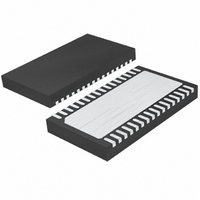LTC4269IDKD-2#PBF Linear Technology, LTC4269IDKD-2#PBF Datasheet - Page 14

LTC4269IDKD-2#PBF
Manufacturer Part Number
LTC4269IDKD-2#PBF
Description
IC PD/SYNC FORWARD CTRLR 32-DFN
Manufacturer
Linear Technology
Type
Power Over Ethernet (PoE)r
Datasheet
1.LTC4269CDKD-2PBF.pdf
(34 pages)
Specifications of LTC4269IDKD-2#PBF
Applications
Power Interface Switch for Power Over Ethernet (PoE) Devices
Voltage - Supply
14 V ~ 16 V
Operating Temperature
-40°C ~ 85°C
Mounting Type
Surface Mount
Package / Case
32-DFN
Current - Supply
1.35mA
Interface
IEEE 802.3af
Controller Type
Powered Device Interface Controller (PD)
Operating Temperature (max)
85C
Operating Temperature (min)
-40C
Pin Count
32
Mounting
Surface Mount
Package Type
DFN EP
Case Length
7mm
Screening Level
Industrial
Lead Free Status / RoHS Status
Lead free / RoHS Compliant
Available stocks
Company
Part Number
Manufacturer
Quantity
Price
LTC4269-2
applicaTions inForMaTion
and current waveforms the LTC4269-2 may encounter with
the various modes of operation summarized in Table 1.
Table 1. LTC4269-2 Modes of Operation as a Function
of Input Voltage
V
0V to 1.4V
1.5V to 9.8V
(5.4V to 9.8V)
12.5V to On/UVLO
On/UVLO to 60V
>71V
On/UVLO includes hysteresis. Rising input threshold: 37.2V max.
Falling input threshold: 30.0V min.
These modes satisfy the requirements defined in the
IEEE 802.3af/at specification.
INPUT DIODE BRIDGE
In the IEEE 802.3af/at standard, the modes of operation
reference the input voltage at the PD’s RJ45 connector.
Since the PD must handle power received in either polarity
from either the data or the spare pair, input diode bridges
BR1 and BR2 are connected between the RJ45 connector
and the LTC4269-2 (Figure 2).
The input diode bridge introduces a voltage drop that af-
fects the range for each mode of operation. The LTC4269-2
compensates for these voltage drops so that a PD built
with the LTC4269-2 meets the IEEE 802.3af/at-established
PORTP
– V
PORTN
(V) LTC4269-2 MODES OF OPERATION
Inactive (Reset after 1st Classification Event)
25k Signature Resistor Detection Before 1st
Classification Event
(Mark, 11k Signature Corrupt After 1st
Classification Event)
Classification Load Current Active
Inrush and Power Applied to PD Load
Overvoltage Lockout, Classification and Hot Swap
are Disabled.
DEVICE (PD)
POWERED
INPUT
Figure 2. PD Front End Using Diode Bridge on Main and Spare Inputs
RJ45
1
2
3
6
4
5
7
8
TX
TX
RX
RX
+
–
+
–
SPARE
SPARE
+
–
T1
BR2
TO PHY
voltage ranges. Note that the Electrical Specifications are
referenced with respect to the LTC4269-2 package pins.
DETECTION
During detection, the PSE looks for a 25k signature resis-
tor which identifies the device as a PD. The PSE will apply
two voltages in the range of 2.8V to 10V and measures
the corresponding currents. Figure 1 shows the detection
voltages V1 and V2 and the corresponding PD current. The
PSE calculates the signature resistance using the ∆V/∆I
measurement technique.
The LTC4269-2 presents its precision, temperature-com-
pensated 25k resistor between the V
pins, alerting the PSE that a PD is present and requests
power to be applied. The LTC4269-2 signature resistor
also compensates for the additional series resistance
introduced by the input diode bridge. Thus a PD built with
the LTC4269-2 conforms to the IEEE 802.3af/at detection
specifications.
SIGNATURE CORRUPT OPTION
In some designs that include an auxiliary power option,
it is necessary to prevent a PD from being detected by a
PSE. The LTC4269-2 signature resistance can be corrupted
with the SHDN pin (Figure 3). Taking the SHDN pin high
will reduce the signature resistor below 11k which is an
invalid signature per the IEEE 802.3af/at specifications, and
alerts the PSE not to apply power. Invoking the SHDN pin
0.1µF
100V
BR1
D3
V
PORTN
LTC4269-2
V
PORTP
42692 F02
PORTP
and V
PORTN
42692fb













